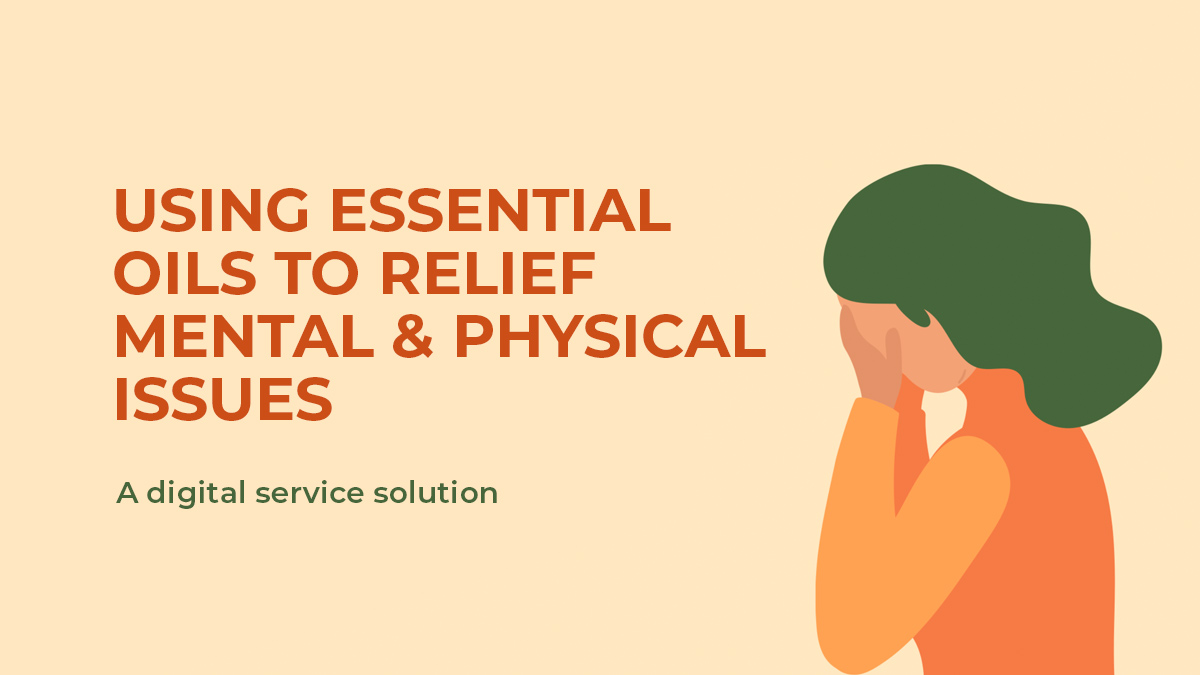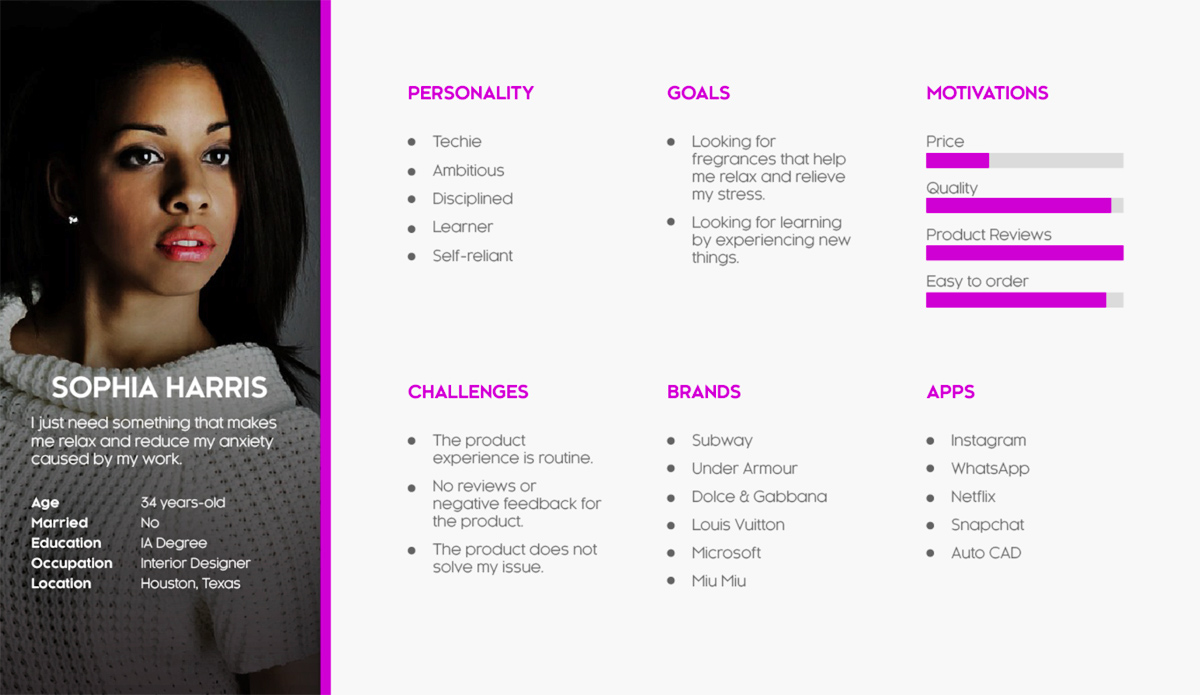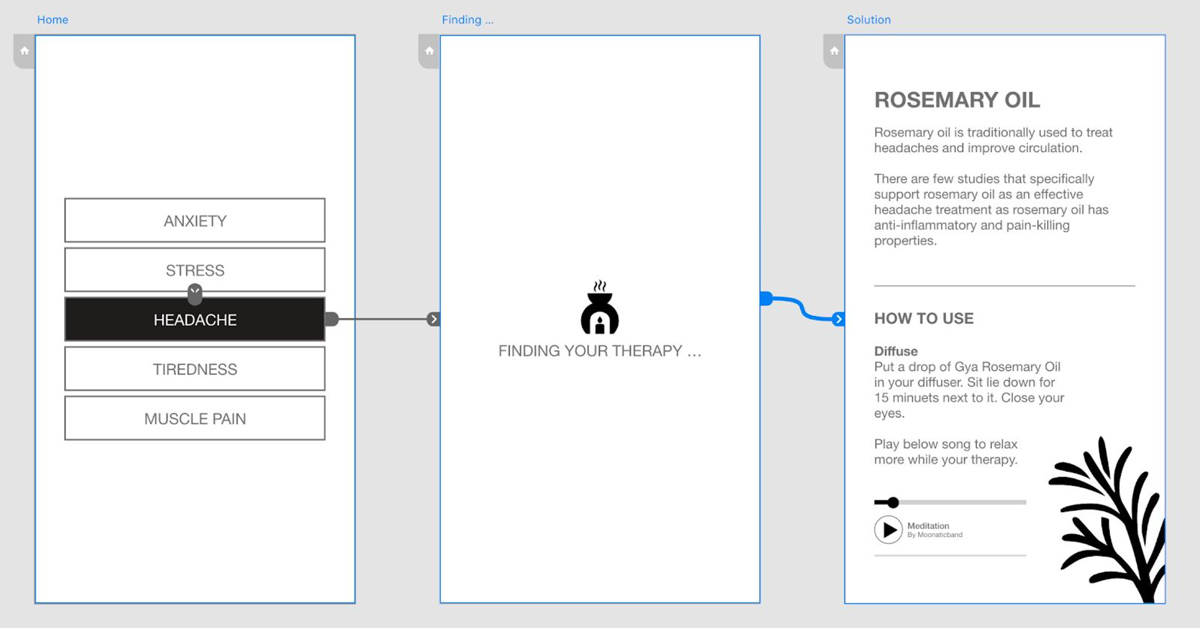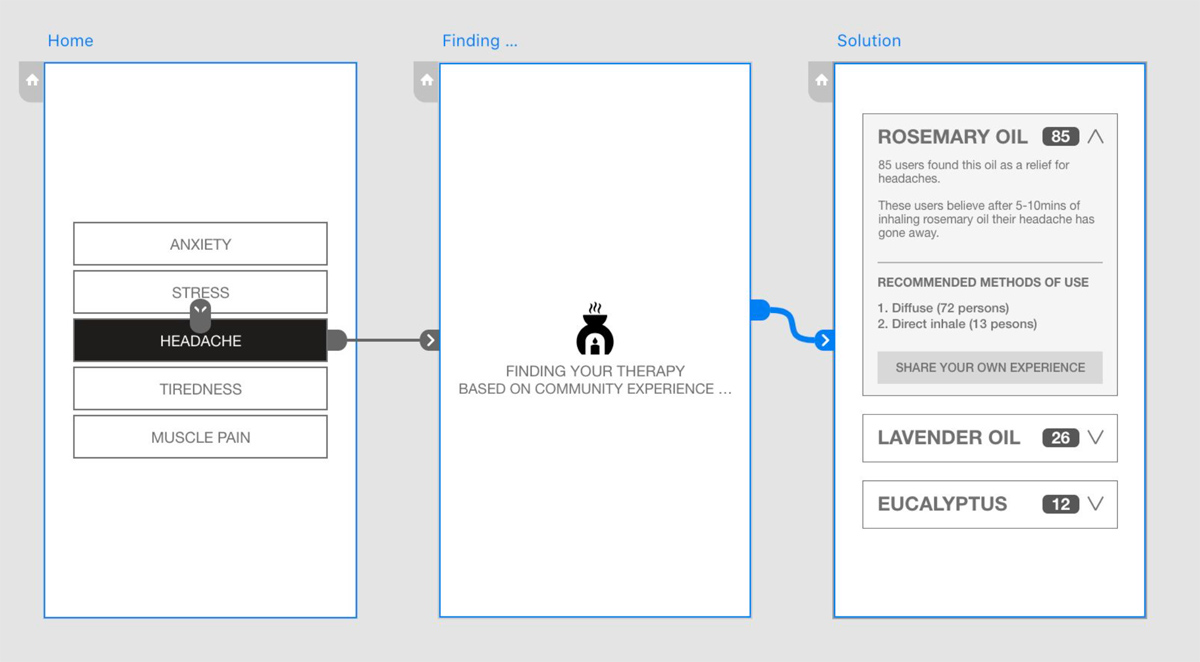
Introduction
The crisis caused by COVID19 pandemic has affected people’s mental health as it has made a negative impact on the world’s economy, and on the other hand, made people stay home and isolated. Fear, worry, and stress are the common issues that are caused by this crisis. For some people, job loss and being isolated are the main reason for having stress and worries, while some might have the same issue because of the workload caused by the pandemic outbreak (Marshal 2020).
According to a study, fragrances and scents can directly and indirectly affect the psychological and physiological conditions of humans to heal and relieve mental and physical problems. This means that fragrances produced by essential oils can be used as a therapy for easing stress, worries and even sometimes, to ease physical pains. Depending on the physical or mental problem a person may experience, essential oils can be consumed either by smelling it or even by applying it to the skin (Viernstein 2016) to be used as a cure for a problem. Furthermore, fragrances can be ordered online and used inside a private living space as a contactless therapy compared to the other therapies where you need to go to a clinic and have physical contacts with other people which could be risky during a pandemic outbreak such as COVID19’s.
The concept of this campaign is to encourage people with issues such as stress and worries, mainly caused by COVID-19, to use fragrances and smells of essential oils to relieve and solve their mental or physical problems as smells can have a positive impact to our nerve system and our brain once they enter our nose, travel through our olfactory bulb and cranial nerve to reach the center of our brain (Holohan 2012). T he campaign will make people aware of their mental issues and will teach them how to solve their issue using fragrances while learning about essential oils and their effects. It also will allow the consumers to share their experiences of using fragrances as a therapy with other users amongst an online community and discuss with each other regarding their common issues and other related topics.
This campaign will be done on two digital media platforms, as a website and a mobile app, and it will be focused on the product’s values and key features to add more value to the brand by not only offering the users a solution app, but also by educating them on scents of essential oils and their impact on human’s body and mental health. The app and the website will teach the users which fragrance can be used for which problem and how it should be applied to result in the best impact.
The brand name chosen for this campaign is Aromalab, which emphases “Aromatherapy” and the word “Laboratory” (a place for scientific experiments, research, or education), so it highlights the purpose of this brand as using the scent for healing and learning on how to heal. Also, the word Lab will connect the campaign to its mother brand which is “Gya Labs”.

Target Audience
The target audience for this campaign is mainly focused on female professionals (male consumers can be also included as secondary TA) based in the United States or anywhere else in the age range of 28 to 40 who are facing the ups and downs of life and looking for something that can help & motivate them to overcome their issues such as their anxiety and mental problems while they can experience and learn new things in their lives.
This target group is often known as Gen-Y or Millennia. Gen-Y people grew up with technology and they rely on the media. They are flexible, ambitious and confident about what they want to do. They also have passion for learning (Indeed 2019).
Ideas
The concept for this campaign is to create a service across digital media that helps its target audience to overcome their mental issues using fragrances while teaching them which scent can help which issue and how.
Since the Gen-Y people are our target market and this group is known as tech-savvy, the digital service app needs to be accessible across two popular digital media platforms of online website and mobile app. As the use of the internet and the web is growing everyday (Roser Ritchie and Ortiz-Ospina 2018), having a website for this service is necessary. On the other hand, a web app will also make the service available for people who are looking for such a service by searching their issues on search engines like Google.
As mobile technology has spread rapidly, the use of mobile phones has also increased significantly around the world everyday (Clement 2019), a service mobile app can be also available for this campaign as a complementary application to the website app. The mobile app will enable the users to access the service easier for them if they are intending to use the service on their mobile devices, as well as make the app to use other multimedia features such as playing songs.

Idea 1
Before the user starts learning about the fragrances and their effects on their bodies/minds, they can input their issues to the app to let the app find the best and appropriate therapy for them. At this stage, users will be asked some quick questions regarding their problem. For example, if their problem is mental or physical, which part of their body is involved and how long they are experiencing the issue for.
After receiving these information, the app will analyse the info and find the best fragrance and its application method as the best result. The app will also make the user aware whether the issue is a serious one by recommending them to see a specialist.
After finding solutions, the app will give options to users for applying fragrances to their body. While doing this, the app will also educate them why these fragrances are good for their issue.
The app also can play music which is good for their therapy while they are using the fragrances. For example, relaxing music can be played when they are stressed and using a calming fragrance. This function can be done by connecting the app with Spotify. The app also can connect the users together to communicate with each other to discuss their issues and experiences of using fragrances using a forum/chat- like section.
The benefit of this idea is that users learn about the therapy and its effects directly as it is given by the app and will have a chance to experience it to use it as a cure for their issue.

Idea 2
This idea is more concentrated on consumers’ experiences of consuming fragrances and their effects where the solutions/therapies are listed as a therapy based on the users suggestions and experiences. Similar to the IDEA #1, this idea will require the user to select the problem they have first, then, the system will show the therapies that are based and recommended by the community experience. So, rather than giving a prescription to the user based on the research and suggestions from experts, this idea will help the user to choose their therapy based on other consumers’ experiences.
Therefore, the list of therapies for an issue is provided and sorted by other app users recommendations. For example, if you key in “Headache” as your issue, the app will check which fragrances are suggested as a therapy for headache by users, and which ones are recommended the most by showing the number of recommendations next to it. So the result will also show you relevant details shared by other users – eg. how much oil is needed, how to use the oil, how long you need to inhale or apply it.
All users will be able to share their experience in this app and recommend the therapy that worked for them to the app for sharing with other users. The therapies in this app might dynamically change as different consumers might experience different effects.
In other words, this app will offer therapies that are recommended by the community rather than by experts. In this scenario, users get involved with the process of proving the therapy as they experience it. They will be able to learn about the fragrances and their effects on the human body from recommendations and feedback from other users.
Future Plans
Based on the comments made after the presentation, the campaign can have more features to cover in terms of marketing such as the usage of essential oils for other purposes than just therapy – For instance, using the oils for hobbies and for people who are essential oil fans. Marketing wise, the service could also have promotions that offer discounts during occasional events as well as showing the best sellers on the landing/home page.
As for the educational part of the service where it teaches the users how to use the oils, there could be a description on how you can take care of the oil itself – In which condition and the temperature the essential oil needs to be kept etc. It also would be more informative and make it more transparent that it shows how the oils are created.
References
- Louise Marshall, Jo Bibby, Isabel Abbs (2020), Emerging evidence on COVID-19’s impact on mental health and health inequalities, The Health Foundation UK [online] Available from <https://www.health.org.uk/news-and-comment/blogs/emerging-evidence-on-covid-19s-impact-on-mental-health- and-health> [17 Aug 2020]
- Helmut Viernstein (2016), Influence of Fragrances on Human Psychophysiological Activity: With Special Reference to Human Electroencephalographic Response, US National Library of Medicine National Institutes of Health [online] Available from <https://www.ncbi.nlm.nih.gov/pmc/articles/PMC5198031/> [17 Aug 2020]
- Meghan Holohan (2012), Smells like nostalgia: Why do scents bring back memories?, NBC News Health [online] Available from
<https://www.nbcnews.com/health/body-odd/smells-nostalgia-why-do-scents-bring-back-memories-f895521> [27 Aug 2020] - Indeed (2019), Indeed.com, 10 Common Characteristics of Millennial Generation Employees [online] Available from <https://www.indeed.com/career-advice/interviewing/10-millennial-generation-characteristics> [5 September 2020]
- Max Roser, Hannah Ritchie and Esteban Ortiz-Ospina (2018), Our World in Data, Internet; The Internet’s history has just begun [online] Available from <https://ourworldindata.org/internet> [5 September 2020]
6. J. Clement (2019), Mobile Internet & Apps, Mobile internet usage worldwide – Statistics & Facts, Statista [online] Available from <https://www.statista.com/topics/779/mobile-internet/> [5 September 2020]

very informational content, thank you!